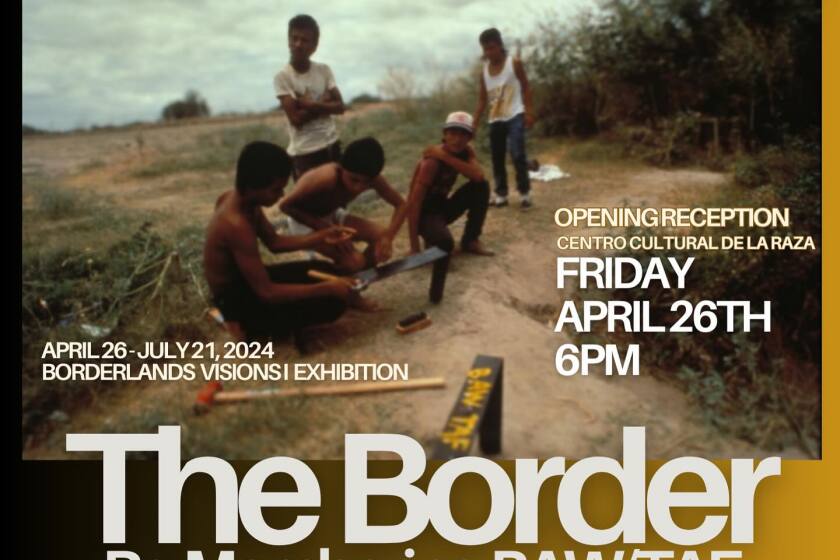Commentary: San Diego played a role in California’s journey to statehood
The California State Supreme Court passed up a major teaching moment by not explaining exactly why it removed Proposition 9 from the state ballot, Tim Draper’s proposal to let voters consider dividing the state into smaller pieces.
The answer is straightforward: California was created by an act of the United States Congress in 1850, which had sovereign authority over the territory at the time. Thus, whatever the state of California does, it will take an act of “equal dignity” that is another act of Congress to shape shift the Golden State.
For a more complete treatment of how states came to be, Mark Stein’s wonderful book “How the State’s Got Their Shapes” is a must. However, it is possible to shoehorn the tale of how Congress obtained that “sovereign authority” into a short column.
The then-President James K. Polk personified and acted on the national vision of spreading the American nation from “sea to shining sea.”
Of course that meant elbowing out the continental incursions of many other nations.
But don’t feel bad for them, they had elbowed out other occupants, and those occupants others, and on and on, since the beginning of time.
In the case of California, a struggle among various indigenous tribes and occupying Hispanics was interrupted by President Polk’s super-ambitious, pot-stirring subversive agent Brevet (temporary) Capt. John C. Fremont, whose mission it was to undermine local authorities by stirring up American immigrants in favor of an American takeover of California.
The result was the temporary revolt called the Bear-Flag Rebellion of June 1846. As the name implies, their crude propaganda flag became the basis of our current California Republic state flag.
With the first flush of success, and quick to claim credit, Fremont dispatched his loyal and now famous scout, Kit Carson, east to the White House to inform Polk of his mighty accomplishment.
No sooner had the famous scout left California than Fremont’s successes were overturned and the local order was reestablished. Meanwhile, leaving little to chance, Polk had ordered the U.S. Army under Gen. Stephen Kearny (Kearny Mesa) to secure California.
But chance intervened.
Going east in October 1846, Carson encountered Kearny headed west and was cajoled into informing Kearny of Fremont’s optimistic message.
This led Kearny to fatefully conclude that his whole Army was not going to be needed in California so he could reassign much of it to provide security for American settlers in West Texas, New Mexico and Arizona.
Meanwhile, another fateful meeting was being held in Washington.
Representatives of the Mormon Church were striking a deal with President Polk for some land out west if the Mormons would side with the American government in the Mexican-American War and provide 500 army volunteers, thereby forming the famous Mormon Battalion whose interesting museum you can visit in Old Town.
And here is where San Diego comes in.
Kearny, with his very reduced Army, accompanied by the reluctant Carson, eventually arrived in lovely San Pasqual Valley, now a city of San Diego agricultural preserve.
There, Kearny and his men, in December 1846, suffered a terrible defeat and were forced to retreat to “Mule Hill,” the one near Rancho Bernardo with the Christian Cross on the top that you can see from I-15.
There, Kearny and his men survived overnight while the ever-resilient Carson, and a Diegueno Tribe member named Chamuqtua, ran barefoot through the night to the San Diego Harbor seeking help from the U.S. Navy in port there.
The significance of that defeat is that California does not immediately come under the control of the United States government.
However, in January 1847, after a grueling 2,000-mile march from Council Bluffs, Iowa, the Mormon volunteers, now an official battalion of the United States Army, crossed into California unchallenged thereby asserting the authority of the United States government and thereby gaining sovereignty over California. Based on that sovereignty, the Congress passed the California Statehood Act in 1850.
The California Supreme Court was correct to remove this moot item from the ballot.
If Mr. Draper wants to bust up California, all he has to do is convince Congress. It should cost a lot less because all those little Lilliputian states along the East Coast hate us anyway.
Stirling is a retired Superior Court judge and former member of the California state Assembly and Senate.
Get Weekend Opinion on Sundays and Reader Opinion on Mondays
Editorials, commentary and more delivered Sunday morning, and Reader Reaction on Mondays.
You may occasionally receive promotional content from the San Diego Union-Tribune.




